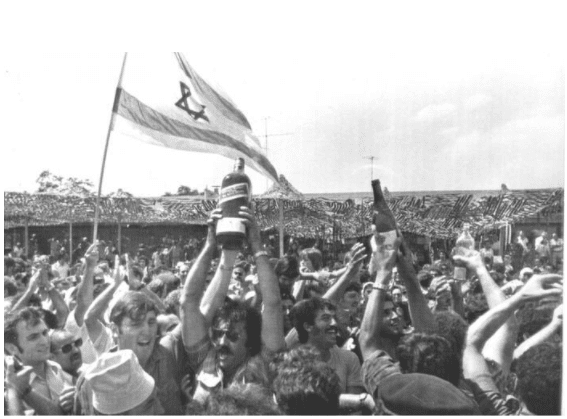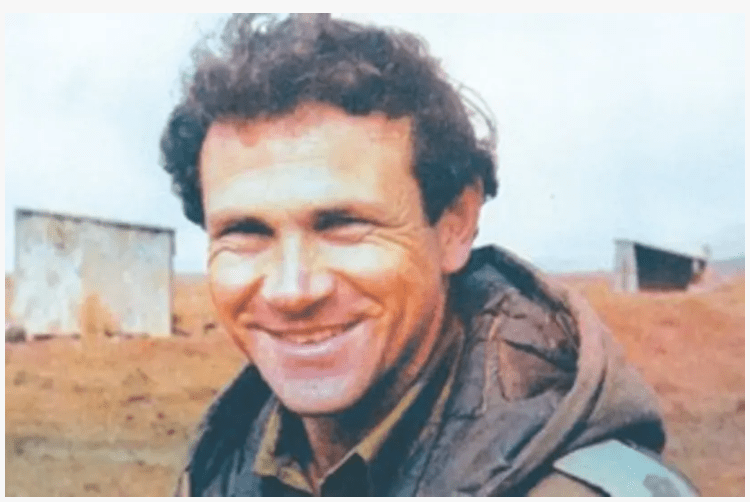On the day when Americans celebrated the bicentennial of their independence, the Israelis struck a blow for freedom and justice which will be remembered for many many years to come.
When 248 passengers boarded Air France Flight 139 in Tel Aviv on June 27th 1976, they had no idea that within a week, they were to be involved in the most dramatic and audacious rescue in recent history. The flight stopped over in Athens where another 58 passengers boarded. However, among those 58 passengers were four terrorists: two Palestinians from the Popular Front for the Liberation of Palestine – External Operations (PFLP-EO), and two Germans, from the German Revolutionary Cells.
The terrorists forced the plane to be diverted to Benghazi, Libya where it was refuelled. Finally, they forced it to fly to Entebbe Airport in Uganda. At that stage, Uganda was being ruled by the brutal and possibly insane dictator, Idi Amin who was openly sympathetic to the Palestinian cause. On arrival in Uganda, the four hijackers were allowed to be joined by four more. The hostages were transferred to the transit hall in the airport terminal where they were held for several days under guard.
The day after the hijacking, the terrorists issued their demands. They wanted US$5 million and the release of 53 Palestinian and pro-Palestinian militants. If these demands were not met, they threatened that they would begin to kill the hostages on July 1st.
Israeli and some Jewish passengers separated
Over the following few days, the hijackers separated the Israelis and also some non-Israeli Jewish people from the other passengers and released those that were non-Jewish and non-Israeli. These were then flown to Paris. This left just over 100 captives behind in Entebbe. Meanwhile, the deadline was extended to midday on July 4th after the Israeli government said it was willing to open negotiations.


The Israeli government did allegedly consider giving in to the hostage-takers’ demands given the incredible difficulties that any proposed rescue would pose. Not the least of these was the fact that they could not depend on the support of the Ugandans. Any rescue would be carried out in the face of opposition from not just the hijackers but also Ugandan forces at the airport. Another problem was that the layout of the airport was not known. However, it turned out that one Israeli firm had built the terminal some years previously so they were consulted to get some information on its design.
Diplomatic solutions ultimately failed
Meanwhile, the Israeli government was trying to resolve the crisis via diplomatic means, seeking assistance from the USA. The USA in turn contacted the Egyptian government to see if they could help. Subsequently, Anwar Sadat tried unsuccessfully to convince Amin and the terrorists to release the hostages.
Interestingly, PLO chairman Yasser Arafat also sent a political aide to negotiate with the terrorists but they wouldn’t speak with him. Also, one retired IDF officer who was a close friend of Amin’s phoned the Ugandan dictator several times seeking to convince him to get the hostages released but to no avail.
Rescue operation finally approved
Meanwhile, a daring rescue plan had been put together by IDF Major General Yekutiel Adam and Brigadier General Dan Shomron. This was presented to the Israeli cabinet on the evening of July 3rd and they took the momentous decision to approve it. The rescue would be attempted the following day when the hijackers’ deadline was due to expire. As a coincidence, this was also the day on which Americans would celebrate the 200th anniversary of their independence.
The plan would involve the use of Lockheed C-130 Hercules aircraft. However, this immediately presented one major logistical difficulty: how and where to refuel them. As it happened, the Kenyan government agreed that they could be refuelled on Kenyan territory.
The Israeli rescue force – led by Dan Shomron – consisted of approximately 100 personnel. Within that, there was an assault unit of 29 men, led by Lt. Col. Yonatan Netanyahu, brother of former Israeli prime minister, Binyamin Netanyahu. Other sub-groups within the rescue force were tasked with securing the runway at Entebbe, protecting the aircraft while the rescue was ongoing and destroying Ugandan Air Force MiG fighter jets on the ground in case these were used to intercept the Lockheeds after the rescue and following take-off.
The details of the daring and precisely planned operation are given in much greater detail here. However, within 6 minutes of arrival, the terrorists had been killed and the transit building had been secured. Within 20 minutes, the hostages had been rescued and were being evacuated on one of the aircraft.


Sadly, not everyone made it safely back to Israel. Lt. Col. Yonatan Netanyahu was killed in the operation as were three of the hostages. Another hostage called Dora Bloch, a 74-year-old Israeli who also held British citizenship, and who had been admitted to a Ugandan hospital after choking on a chicken bone was subsequently murdered by officers of the Uganda Army.
Idi Amin’s Fury
Amin was furious when he heard of the successful mission. Fourteen Ugandan soldiers who had been stationed at Entebbe Airport were arrested under suspicion of collaborating with the Israelis. Twelve of them were subsequently shot. Amin was also furious with Kenya for having allowed the Israelis to refuel on their territory. He ordered a pogrom against the thousands of Kenyans living in Uganda resulting in the murder of 245 people. As a result of this, approximately 3,000 Kenyans fled Uganda as refugees.
Amin was also suspected in the assassination of Kenyan Minister for Agriculture, Bruce Mackenzie who was apparently instrumental in convincing the Kenyan government to cooperate with Israel. Mackenzie was killed by a bomb attached to his plane in May 1978 after leaving a meeting with Idi Amin.
Huge boost to Israeli morale
The rescuers and hostages arrived back in Israel on July 4th where they were given a heroes’ welcome. This was fewer than three years after the sobering Yom Kippur War when Israel had been caught unawares with surprise attacks from Egypt and Syria in October 1973. It gave a huge boost to Israeli national morale and earned the Jewish State much respect and recognition around the world.
As a result of the Entebbe Operation, the United States military used the model deployed in the rescue to set up elite squads to carry out similar endeavours should the need arise. One notable attempt to emulate what was done at Entebbe was Operation Eagle Claw in 1980, the tragically failed attempted rescue of 53 American embassy employees held hostage in Tehran during the Iran hostage crisis.
Be that as it may, the Entebbe Operation was a major setback for the forces of international terrorism. The message went out – loud and clear – that terrorists couldn’t always act with impunity even when they had the backing of rogue regimes and dictators. On the day when Americans celebrated the bicentennial of their independence, the Israelis struck a blow for freedom and justice which will be remembered for many many years to come.
By Ciarán Ó Raghallaigh




